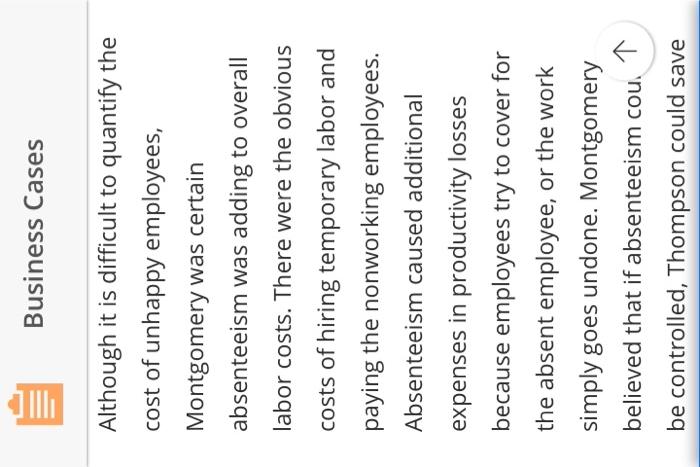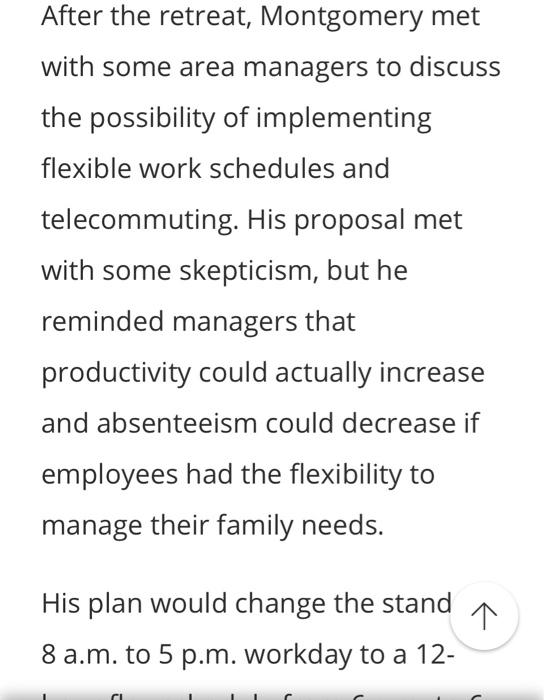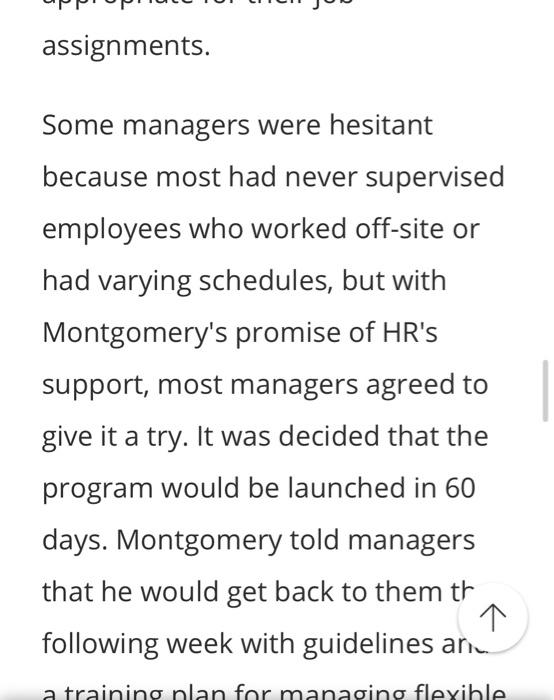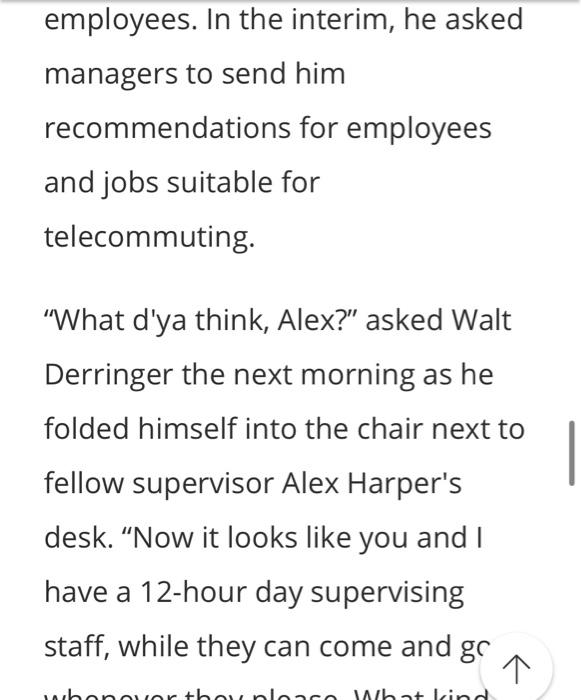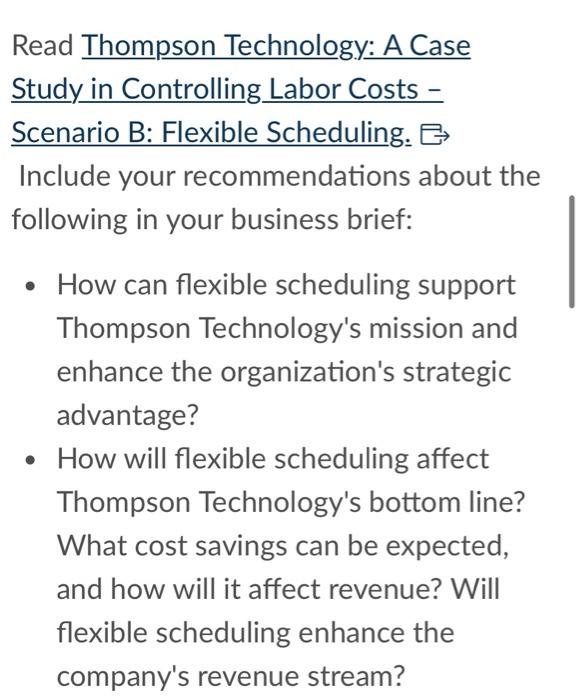Scenario B: Flexible Scheduling
Read Thompson Technology: A Case Study in Controlling Labor Costs Scenario B: Flexible Scheduling.Links to an external site. Include your recommendations about the following in your business brief:
- How can flexible scheduling support Thompson Technology's mission and enhance the organization's strategic advantage?
- How will flexible scheduling affect Thompson Technology's bottom line? What cost savings can be expected, and how will it affect revenue? Will flexible scheduling enhance the company's revenue stream?
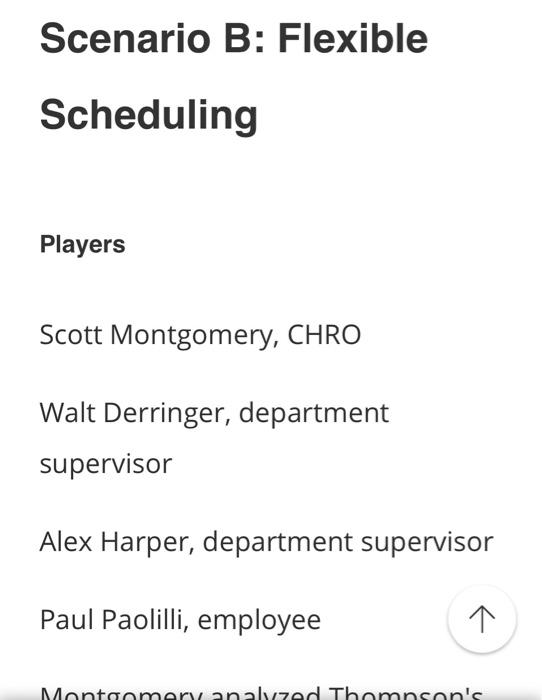
Scenario B: Flexible Scheduling Players Scott Montgomery, CHRO Walt Derringer, department supervisor Alex Harper, department supervisor Paul Paolilli, employee Although it is difficult to quantify the cost of unhappy employees, Montgomery was certain absenteeism was adding to overall labor costs. There were the obvious costs of hiring temporary labor and paying the nonworking employees. Absenteeism caused additional expenses in productivity losses because employees try to cover for the absent employee, or the work simply goes undone. Montgomery believed that if absenteeism cou. be controlled, Thompson could save After the retreat, Montgomery met with some area managers to discuss the possibility of implementing flexible work schedules and telecommuting. His proposal met with some skepticism, but he reminded managers that productivity could actually increase and absenteeism could decrease if employees had the flexibility to manage their family needs. His plan would change the stand 8 a.m. to 5 p.m. workday to a 12 - His plan would change the standard 8 a.m. to 5 p.m. workday to a 12 hour flex schedule from 6 a.m. to 6 p.m. Employees would still work a regular eight-hour day, but they would have flexible start and stop times, with start times between 6 a.m. and 10 a.m. and stop times between 2 p.m. and 6 p.m. All employees would be on-site between the core hours of 10a.m. to 2 p.m. In addition, some employees could occasionally telecommute when it was assignments. Some managers were hesitant because most had never supervised employees who worked off-site or had varying schedules, but with Montgomery's promise of HR's support, most managers agreed to give it a try. It was decided that the program would be launched in 60 days. Montgomery told managers that he would get back to them tr following week with guidelines ar, employees. In the interim, he asked managers to send him recommendations for employees and jobs suitable for telecommuting. "What d'ya think, Alex?" asked Walt Derringer the next morning as he folded himself into the chair next to fellow supervisor Alex Harper's desk. "Now it looks like you and I have a 12-hour day supervising staff, while they can come and gc Read Thompson Technology: A Case Study in Controlling Labor Costs - Scenario B: Flexible Scheduling: Include your recommendations about the following in your business brief: - How can flexible scheduling support Thompson Technology's mission and enhance the organization's strategic advantage? - How will flexible scheduling affect Thompson Technology's bottom line? What cost savings can be expected, and how will it affect revenue? Will flexible scheduling enhance the company's revenue stream

